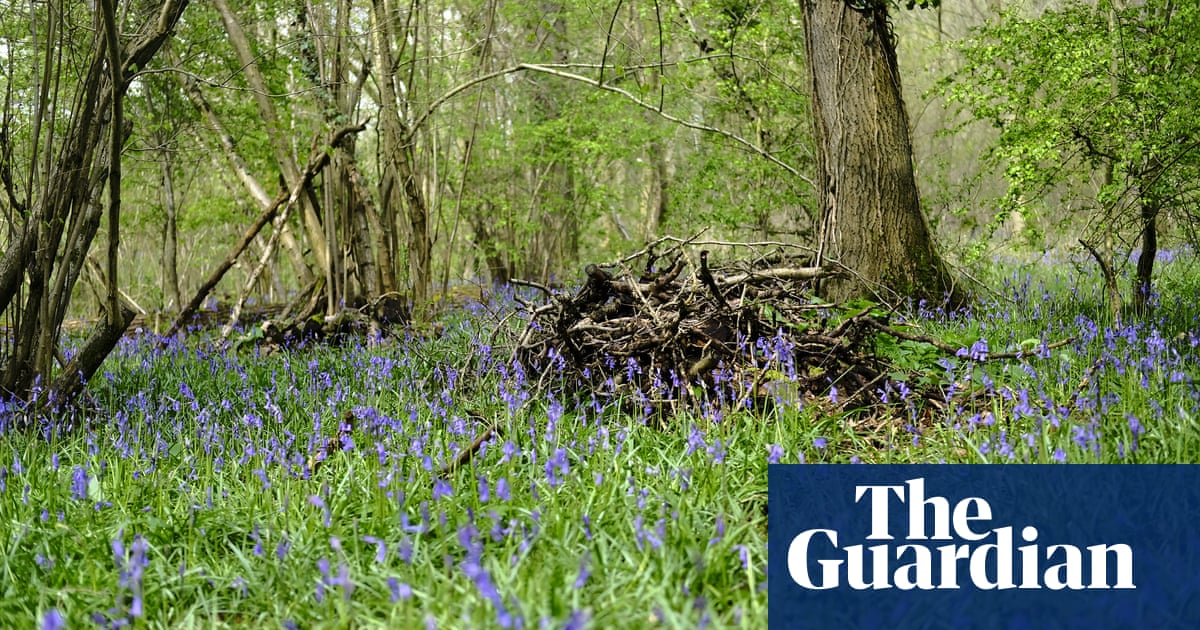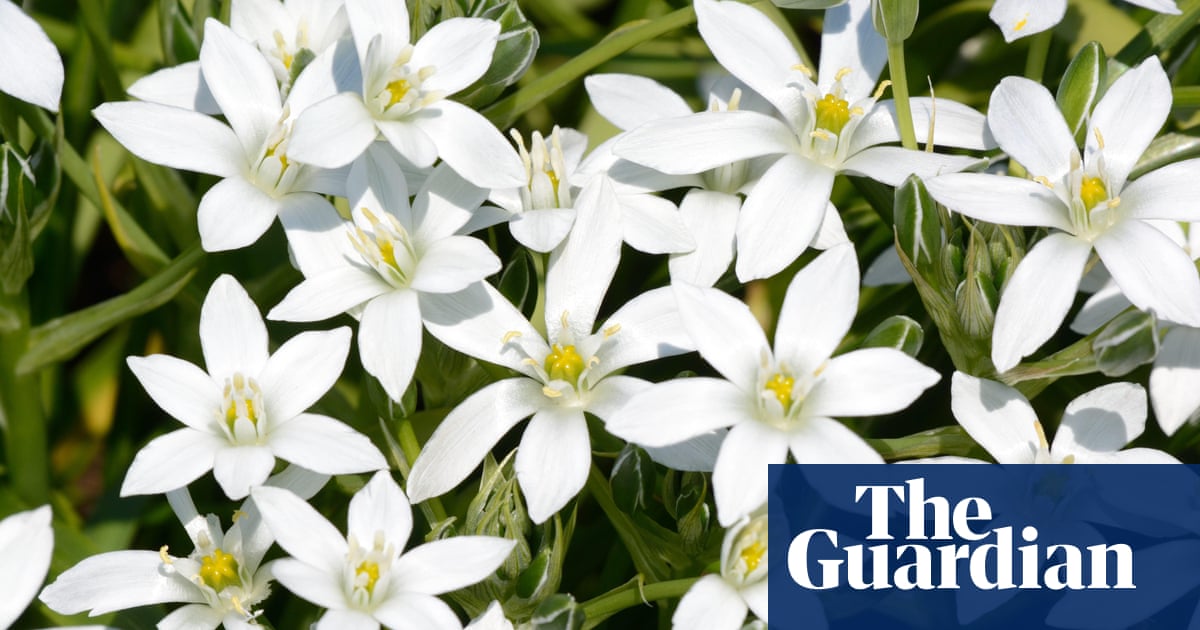
Every year at bluebell time, the same thought recurs: spring is slipping away. In less than two weeks it will officially segue into summer and, like the last sand grains flowing through an egg timer, these final glorious days seem to gather pace. But this is an idyllic place to while away one of them.
Downstream from Abbey Bridge, the Tees Valley Way passes through deciduous woodland, which clings to a steep bank high above the River Tees. The rocky gorge below is filled with birdsong; blackcaps, willow warblers, a song thrush, almost drowning the sound of the river. Overhead, newly expanded oak leaves are as translucent as stained glass. Along the footpath, an aroma of garlic rises from starry constellations of ramson flowers when I brush against them. Florist shop fragrance saturates the air where it passes through drifts of bluebells. Tens of thousands of flowers, all waiting for a pollinator.
Spring perfection. Well, not quite. Among this tranquil sea of blue and white there are yellow riots of goldilocks Ranunculus auricomus, that most imperfect of buttercups. The Japanese aesthetic of wabi-sabi finds beauty in imperfection – a philosophy usually linked to art forms such as ceramics, but if applied to plants this oft-overlooked woodland spring flower should surely be celebrated.
It’s hard to find a perfect goldilocks inflorescence whose flowers have a full complement of petals. Unfettered by rules of organised floral development and symmetry, some flowers may have none, others any number between one and five, often malformed. In the uniformity of a bluebell wood, this is the uncouth attender at a formal occasion who ignores the dress code and turns up in T-shirt and ripped jeans.
The reason? Goldilocks has forsaken sex. It no longer relies on showy flowers to compete with bluebells for insect pollinators. Instead, its seeds are clonal propagules, reliably produced without union between pollen and ovules, so all offspring are identical to the parent plant.
But sometimes mutation intervenes and then a new and subtly different local, clonal goldilocks microspecies proliferates. Botanists believe there may be more than one hundred of these in our flora, yet to be described and named. Exquisite complexity, arising from imperfection.












